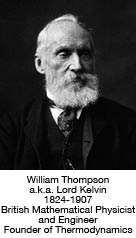
Editor's note: The Does God Exist? ministry gives $1,000 scholarships every year for post-secondary education. To win the scholarship, participants must enter a 5,000 word (or less) essay on an announced topic. In 2013 the topic was “Science is a Friend of Faith — Not an Enemy.” Our winning essay for 2013 was submitted by Godwin Oriyomi Adeboye of Igbaja, Kwara State, Nigeria. We have made several changes to the grammar and cultured structure of this essay.
INTRODUCTION
 In the twentieth century there was a widespread conviction that a trend toward secularization inevitably goes hand in hand with the development of a modern industrialized society. Accordingly, there was much talk about the impossibility of a modern, scientific mind believing in God. Rudolf Bultmann and other radical theologians went so far as to claim that “it is not possible to use electric lights and modern gadgets and at the same time believe in the biblical faith and miracles.” 1 Other scholars also concluded that science and faith are in conflict. The basic challenge is whether science undermines religious faith, or whether there are particular tenets of religion that are at odds with some tenets of science. My point in this paper is that science and faith are not enemies but friends.
In the twentieth century there was a widespread conviction that a trend toward secularization inevitably goes hand in hand with the development of a modern industrialized society. Accordingly, there was much talk about the impossibility of a modern, scientific mind believing in God. Rudolf Bultmann and other radical theologians went so far as to claim that “it is not possible to use electric lights and modern gadgets and at the same time believe in the biblical faith and miracles.” 1 Other scholars also concluded that science and faith are in conflict. The basic challenge is whether science undermines religious faith, or whether there are particular tenets of religion that are at odds with some tenets of science. My point in this paper is that science and faith are not enemies but friends.
Evolutionary biologists like Richard Dawkins opined that religious and scientific claims are not reconcilable. However, the much-hyped conflict between faith and science is really a conflict between men of science and men of religion rather than science and religion themselves. Faith tries to answer the question of why nature exists and who is behind it, while science tells us how nature goes. Science and faith do not, therefore, seem to be essential rivals. In view of this argument, we will be doing a critical assessment of some scientific theories with a keen interest in reconciling them with some religious facts.
EVOLUTION AND BIBLICAL CREATION
How should we discuss the seeming contradictions between the scientific theory of evolution and the biblical concept of special creation? First, how shall we deal with the apparent conflict between what the Bible says about the origin and development of the universe and what the scientific theory of evolution seems to tell us about the same subject?
Some people have taken evolution to what could be called “evolutionism.” They have made evolution to be what philosopher Alvin Plantinga called the “crucial myth of our secular culture.” 2 The theory of evolution plays a fascinating and crucial role in contemporary western culture. Evolution has become the regular subject of courtroom drama and public debate. In academia, it is an idol of the contemporary  time. It serves as a litmus test distinguishing the ignorant and bigoted fundamentalist from the properly cultured and scientifically informed individual. Oxford biologist and well-known atheist Richard Dawkins wrote, “If superior creatures from space ever visit our universe, the first question they will ask, in order to assess the level of our civilization, is ‘have they discovered evolution yet?’ ” 3 This assertion shows the importance of the evolution-creation debate.
time. It serves as a litmus test distinguishing the ignorant and bigoted fundamentalist from the properly cultured and scientifically informed individual. Oxford biologist and well-known atheist Richard Dawkins wrote, “If superior creatures from space ever visit our universe, the first question they will ask, in order to assess the level of our civilization, is ‘have they discovered evolution yet?’ ” 3 This assertion shows the importance of the evolution-creation debate.
The Bible teaches that God created the heavens and the earth and all forms of life on it by his sovereign power and will. The Hebrew word bara is translated “create” in English. The word bara is used in the Bible for a special act of creating out of nothing — which can occur only through the instrumentality of God. From the historical evaluation of biblical facts, some Bible students believe that the earth is only 6,000 years old.
On the other hand, evolutionists say that life arose via a process that started from simple to complex forms. They believe that life originated from a unicellular organism such as bacteria to more complex life and eventually to mammals and man. This denotes that all life descended from organisms that lived in the past. Scientists call this the Common Ancestry Theory (CAT), indicating we are “literally cousins of all living things.” 4 The main issue in the evolution-creation debate is the evolutionary claim of natural selection and its dependency on genetic mutation as the sole mechanism through which all living organisms evolve.
The principle of natural selection is vital to evolution. Atheistic evolutionists not only take evolution as a proven fact, but also take the theory to undermine the possibility of any external monitoring agent on the evolutionary process. A cursory look at the issues in evolution will make it clear that evolution itself does not exclude a concept of an external monitoring agent (God).
From the viewpoints of evolution and creation, one can notice some apparent conflict between assertions of the Bible and that of science, but are they really in conflict? The first seeming conflict is the age of the earth. While evolutionists propose billions of years, some creationists suggest 6,000 years — even though the Bible does not literally mention the age of the earth. The assumption that the earth is 6,000 years is based on a genealogical study of scriptural records connected with some biblical history. The first two verses (Genesis 1:1– 2), which are critical to this discussion, need clarification to solve this apparent contradiction between science and faith. What does the Bible really say from unbiased, exegetical engagement of the texts?
From Genesis 1:2 Victor Hamilton mentions the three words that are very important to ascertain the age of the earth from the biblical perspective. These are tohu, bohu, and hayah.5 The Hebrew word hayah means “to become” or “was” when used in relation to the two other words (tohu and bohu), which mean “chaos” or “without form” in English. It can be translated “it became or was formless or chaotic” In regard to the word “earth” (Hebrew erets) as the subject in Genesis 1:2, the text can be rendered, “Earth became or was formless and empty” as the appropriate interpretation of the text. This fact suggests that there are two stages of creation: the original creation of the universe in Genesis 1:1 and then the process of bringing order out of the disordered chaos in verse 2.6 The first creation in Genesis 1:1 can be up to 15 billion years old as the scientific claim purports. This perspective, and the fact that the age of the earth is not mentioned literally in the Bible, solves the apparent science-faith conflict about the age of the earth.
 There is another useful concept that is worthy to note in determining the age of the earth and examining the contradictions between the Bible’s special creation and the scientific claim of continuous evolution. It is the biblical usage of the Hebrew word yom, which means “day” in English. (This word appears more than 2,000 times in the Old Testament.) This word is used in a variety of ways in the Bible: (1) It can be used in regard to daylight in the diurnal cycle; (2) It can mean a normal 24-hour period day; (3) It can mean an indefinite period of time as in Psalm 90:10. The best methodology in hermeneutics and exegesis is using the Bible to interpret the Bible. This methodology is useful to examine the word yom in Genesis and usage of its Greek equivalent (hemera) in 2 Peter 3:8, “. . . one day is with the Lord as a thousand years.” In the Epistle of Peter, the word “day” is used in reference to a long period of time. So the word yom as used by Moses in the Genesis account of creation may not have been a 24-hour day. The longevity of “day” in Genesis time may not be equal to the duration of a day in our time. Similarly naming of all the animals by Adam in just a day is enough to understand that the Genesis day is beyond a 24-hour day. The day as used in Genesis could be a long period of time corresponding to the major periods of evolutionary geological history. The implication of this fact is that the period between the time of the beginning and end of God’s creation need not be just six 24-hour days. The Genesis account of creation does not necessarily denote the concept of an instantaneous creation, but one that happened in stages, possibly over eons — which is the same as what the evolutionists claim. It would be a red-herring to claim that the interpretation of the word yom in Genesis as a 24-hour day is the most spiritual and most conservative interpretation. Interpreting it as indefinite periods of time is hermeneutically appropriate. Even the Talmudic tradition, which contains commentaries on virtually every passage in the Old Testament, is not in support of 24-hour periods for the days in the creation story.
There is another useful concept that is worthy to note in determining the age of the earth and examining the contradictions between the Bible’s special creation and the scientific claim of continuous evolution. It is the biblical usage of the Hebrew word yom, which means “day” in English. (This word appears more than 2,000 times in the Old Testament.) This word is used in a variety of ways in the Bible: (1) It can be used in regard to daylight in the diurnal cycle; (2) It can mean a normal 24-hour period day; (3) It can mean an indefinite period of time as in Psalm 90:10. The best methodology in hermeneutics and exegesis is using the Bible to interpret the Bible. This methodology is useful to examine the word yom in Genesis and usage of its Greek equivalent (hemera) in 2 Peter 3:8, “. . . one day is with the Lord as a thousand years.” In the Epistle of Peter, the word “day” is used in reference to a long period of time. So the word yom as used by Moses in the Genesis account of creation may not have been a 24-hour day. The longevity of “day” in Genesis time may not be equal to the duration of a day in our time. Similarly naming of all the animals by Adam in just a day is enough to understand that the Genesis day is beyond a 24-hour day. The day as used in Genesis could be a long period of time corresponding to the major periods of evolutionary geological history. The implication of this fact is that the period between the time of the beginning and end of God’s creation need not be just six 24-hour days. The Genesis account of creation does not necessarily denote the concept of an instantaneous creation, but one that happened in stages, possibly over eons — which is the same as what the evolutionists claim. It would be a red-herring to claim that the interpretation of the word yom in Genesis as a 24-hour day is the most spiritual and most conservative interpretation. Interpreting it as indefinite periods of time is hermeneutically appropriate. Even the Talmudic tradition, which contains commentaries on virtually every passage in the Old Testament, is not in support of 24-hour periods for the days in the creation story.
However, a clarification is needed at this junction. We have to strip evolution of the naturalistic coat that has been given to it by the atheistic evolutionists. By doing this, we will be able to see whether evolution's claims really contradict the concept of creation as we have it in the Bible. We will give attention to this clarification next.
EVOLUTION, EVOLUTIONISTS, AND EVOLUTIONISM
It is easy to see that what we could call “evolutionism” is not as much science as it is a philosophy of science. Evolutionism is philosophically constructed upon the foundation of naturalism. The naturalistic evolutionists “reflect their metaphysical presupposition, which is an image of their atheistic conceptions.”7 Simply put, evolutionism is what the evolutionists have made evolution to become as a result of their presuppositions.
One such presupposition is that God has nothing left to do in the world, and all beliefs in him are therefore unnecessary. Because of their preconceived prejudice about the existence of God, they have replaced what might be the intervention of God in the evolutionary process with their atheistic-colored natural selection. The evolutionists are not religiously neutral — rather they are religiously biased. As stated by Alvin Plantinga, there are two presuppositions that underlie the views of evolutionists. On the one hand, there is perennial naturalism — a view according to which there is no God. Secondly, there is what can be termed “enlightenment humanism.” If we can remove these notions that have been imposed on evolution by atheistic evolutionists or ill-informed scientists, then the remaining evolutionary fact is never an enemy to the biblical concept of creation. The clash is not between evolution and biblical creation, but it concerns the nature of scientific philosophy employed by some scientists. As long as atheistic scientists and philosophers assume that matter is eternal and thus needs no creator, they can easily leave God out of the picture — even when evolution is pointing to divine intervention in its process.
So the evolutionists presuppose that natural selection is the only mode through which evolutionary trends are guided. One of the major theories postulated by Dr. Johnson Philip of the Graduate School of Apologetics and Theology in India is that one’s presuppositions cannot be separated from the theological conclusions that he/she makes.8 Some neo-Darwinists have pressed too far on their doctrine of natural selection because of their preconceived, prejudiced presuppositions.
The evolutionists use the concept of natural selection to conclude that God does not exist. However, Professor Coutre of the University of Chicago said, “The most fundamental objection to the theory of natural selection is that it does not deal with the question of the origin of life, but how life developed.” 9 This is very important. The concept of natural selection hangs on the theory of transmutation, which itself has some theoretical challenges. However, natural selection can only act on mutations in living things. It cannot explain where the life came from.
Another expression of the spirit of naturalism and atheism of evolutionists can be seen in their concept of the abiogenesis of life. Abiogenesis is the hypothetical natural process by which life came from simple organic compounds. They argue that the origin of life is abiotic though they cannot tell us clearly the nature of their proposed “prebiotic soup.” According to Pattle Pun:
The improbability that the specific coding information inherent in the genetic materials of the living system could have arisen spontaneously seems to be well recognized. The specificity of the genetic code and chirality [right- or left-handedness] of biomolecules have elevated the level of complexity in the living system from that of the periodic order of crystals to the informational organization of human language. Therefore, all chemical evolutionary scenarios require prebiotic production of the informational biomolecules. . . . these enzymatically active RNAs [ribonucleic acids], socalled ribozymes, have rapidly taken the center stage in the discussion of prebiotic evolution. Ribozymes serve as an attractive model which possesses both the capacity of coded information which is normally associated with nucleic acid and the capacity of informational transfer which is carried out by proteins. . . . However, the difficulties faced by the ribozyme hypothesis are not less impressive. The scarcity of the supply of ribonucleotide building blocks in the prebiotic environment, the chirality of the riboses and the specific Y-5' phosphodiester linkage are among these obstacles.10
These “impressive” difficulties are enough to falsify the concept of abiogenesis. In addition, the stipulation of the abiogenesis of life under conditions different from the present universe has removed the theory from empirical sciences. It can neither be verified nor falsified under the present condition of the earth.
 In view of this, the theory of abiogenesis and natural selection as the cardinals of evolution are themselves not totally free from scrutiny. We might say that natural selection can only be the “editor” rather than the “composer” of genetic messages as demanded by the neo-Darwinian evolutionists. Accordingly, directional natural selection is not the driving force of macro-evolution and abiogenesis. Rather it is the hand of the maker using his own selected method in bringing the universe to what it is. It can thus be seen that it is not Bible versus science but Bible versus scientist — in this context, evolutionists. Stripping evolution of its clothes given to it by evolutionists will solve a lot of seeming conflict between evolution and the biblical concept of creation. Simply put, the discussion of evolutionists and evolutionism is deeply embedded in philosophical and naturalistic humanism. Atheistic evolutionists are influenced by the dominant cultural and reasoning patterns of the post-enlightenment.
In view of this, the theory of abiogenesis and natural selection as the cardinals of evolution are themselves not totally free from scrutiny. We might say that natural selection can only be the “editor” rather than the “composer” of genetic messages as demanded by the neo-Darwinian evolutionists. Accordingly, directional natural selection is not the driving force of macro-evolution and abiogenesis. Rather it is the hand of the maker using his own selected method in bringing the universe to what it is. It can thus be seen that it is not Bible versus science but Bible versus scientist — in this context, evolutionists. Stripping evolution of its clothes given to it by evolutionists will solve a lot of seeming conflict between evolution and the biblical concept of creation. Simply put, the discussion of evolutionists and evolutionism is deeply embedded in philosophical and naturalistic humanism. Atheistic evolutionists are influenced by the dominant cultural and reasoning patterns of the post-enlightenment.
Darwinian evolution, strictly speaking, begins after the first life has developed. This does not necessarily refute the claim that there should be a concept of first cause in the creation of the universe that stands outside of the creation. Robert Pollack, a professor of biological sciences at Columbia University wrote, “If you know someone who says the throne of God is empty [that is, God does not exist], and lives with that, then you know that you should cling to that person as a good friend. But be careful: Almost everyone who says that has already placed something or someone else on that throne, usually himself.” 11 This is, in fact, true of atheistic evolutionists.
SCIENTIFIC TERMS AND BIBLICAL TERMS
Another wedge used to draw the camel’s head into the tent by those who propose that faith and science are enemies is that most scientific terms are not found in the Bible. One should not expect the Bible to relate its divine truth in scientific terms because it is not a scientific textbook, but a divine book with a different purpose. Howard Van Till supports this when he writes the following:
We have to respect God’s choice for the historical and cultural contexts in which the biblical texts were written. It was God’s choice to accommodate this mode of expressing himself to the historically and culturally limited conceptual vocabulary of the day. While the Bible articulates the concepts of the created world science articulates its description.12
God was purposeful in the vocabulary he used to express himself through the Bible writers. Though they were inspired by God, biblical writers did not have terms like galactic redshift, thermonuclear fusion, plate tectonics, stellar evolution, ionizing radiation, atomic spectra, DNA, genetic drift, entropy, or even water cycle. Though these terms are not literally found in the Bible, many of them can be directly inferred and are inherent in biblical passages. For example, the concept of the water cycle can be seen in Jeremiah 10:13 and 51:16 where the prophet says, When he utters his voice, there is a multitude of waters in the heavens, and he causes the vapors to ascend from the ends of the earth; he makes lightnings with rain, and brings forth the wind out of his treasures. This one verse clearly outlines four aspects of the hydrologic cycle: evaporation, wind, lightning, and rain. These verses show that though the Bible did not literally mention scientific terms, it discussed scientific phenomena in biblical language. The purpose of writing the Bible was never to develop theories. It was God's attempt to create the possibility of having a good relationship with his creatures.
It would be misguided to expect Scripture to use the kind of statements and terms that would be the same as that of contemporary science. The writers of the Bible conveyed their message to their contemporaries using the language and customs of their time. It is, therefore, unreasonable to expect Moses to describe his creation account in twenty-first century language. If the language of the Bible were to be that of modern science, people in the former age would not have understood it. The purpose of the Mosaic creation account is not to teach scientific terms but to give in a brief manner the account of the beginning of the universe that people of any age can understand.
SCIENTIFIC FACTS FOUND IN THE BIBLE
One of the arresting evidences for a non-conflicting science-faith relationship is the number of scientific facts that have lain hidden within the pages of the Bible. A good example of this relates to the field of astronomy. For thousands of years wise men have busied themselves with counting the stars and constellations. Before the invention of scientific equipment such as the telescope in the seventeenth century, the number of stars was regarded as practically determined. According to the great Ptolemy, the number was around 1,056; Tycho Brahe gave 777; and Kepler counted 1,005.13 This assessment has been tremendously increased and the end is not yet reached. It is now known that there are well over 100 billion stars in our own galaxy and many in billions of other galaxies like our own. Recently, many astronomers agreed that it is not humanly possible to count all the stars. The Bible also asserts this in Jeremiah 33:22: “The host of heaven cannot be numbered.”
In addition, Isaiah 40:22 corresponds with the scientific concept of earth's sphericity where the prophet says, “It is he who sitteth upon the circle of the earth.” The Hebrew word translated “circle” is khug, which can be translated circle or sphere or roundness. Similarly, the correlation between science of meteorology and some Bible facts is noteworthy. For example, the water cycle is a fundamental fact of this field of science whereby water is precipitated as rain or snow, drained off by the river system into the ocean, raised by evaporation back  into the skies, and carried by the wind back to the land to be again precipitated. As pointed out earlier in Jeremiah, this was clearly stated in the Bible ages before man discovered it. King Solomon almost 3,000 years ago in Ecclesiastes 1:6 – 7 affirms that, “The wind goeth toward the south, and turneth about unto the north; it whirleth about continually, and the wind returneth again according to his circuits. All the rivers run into the sea; yet the sea is not full; unto the place from whence the rivers come, thither they return again.” Elihu in Job 36:27 – 29, says “For he maketh small the drops of water: they pour down rain according to the vapour thereof: which the clouds do drop and distil upon man abundantly.” These passages are a most excellent summary of those phases of the hydrologic cycle involving the very marvelous physical process of evaporation, condensation, and precipitations.
into the skies, and carried by the wind back to the land to be again precipitated. As pointed out earlier in Jeremiah, this was clearly stated in the Bible ages before man discovered it. King Solomon almost 3,000 years ago in Ecclesiastes 1:6 – 7 affirms that, “The wind goeth toward the south, and turneth about unto the north; it whirleth about continually, and the wind returneth again according to his circuits. All the rivers run into the sea; yet the sea is not full; unto the place from whence the rivers come, thither they return again.” Elihu in Job 36:27 – 29, says “For he maketh small the drops of water: they pour down rain according to the vapour thereof: which the clouds do drop and distil upon man abundantly.” These passages are a most excellent summary of those phases of the hydrologic cycle involving the very marvelous physical process of evaporation, condensation, and precipitations.
The subject of water supply and sewage disposal are of great interest and import to both bacteriologists and civil engineers, as well as to the general public. It was not until a few score years ago that the significance of a clean and sanitary water supply in the prevention of disease was recognized. But Moses in Leviticus 11:29 – 36 seemed to understand something of modern bacteriology because he forbade the drinking of water from small or stagnant pools or waters that had been contaminated. The word of God was scientifically accurate in this great biological truth penned thousand of years before man discovered and elaborated it.
Henry Morris wrote about another example:
The basic principle of all physical science is that of the law of conservation and deterioration of energy. The law of energy conservation states that in any transformation of energy in a closed system from one sort to another, the total amount of energy remains unchanged. A similar law is the law of mass conservation, which states that although matter may be changed in size, state, form, etc., the total mass cannot be changed. In other words, these laws teach that no creation or destruction of matter or energy is now being accomplished anywhere in the physical universe.14
These laws are of great and prime importance in all physical sciences. However, the Bible taught this thousand of years ago. These laws are related to the laws of thermodynamics in which the principle of entropy increase is related. Entropy is a sort of mathematical abstraction that is actually a measure of the non-availability of energy in a system. Because of this law of entropy increase, it is impossible to create a machine that is 100% efficient and perpetual-motion is not possible. This law also indicates the universe had a beginning:
If it is growing old, it must once have been young; if it is wearing out, it must once have been new; if it is running down, it must first have been “wound up.” In short, this law of energy degeneration conveys us back inexorably to an affirmation of the necessary truth of the existence of a Creator.15
The meticulous care and scrutiny by which peer review is carried out in the scientific process is a great virtue. Science is the search for knowledge and truth. But the Bible also supports this fact, as this can be seen in the biblical usage of the words “faith” and “defense.” The Greek verb pisteuo primarily has reference to the act of faith, while the noun form pistis depicts more clearly what faith means. A Greek-English Lexicon by Liddell and Scott defines the noun as follows: “a means of persuasion, an argument, proof.” Pettho in active voice means to be “fully persuaded.” When these words are used in the infinitive form with relation to oti (because), then it means “to believe or to be convinced.” A good example of this is John 20:31, “Be convinced that Jesus is the Lord.” In 1 Peter 3:15, Peter calls upon all Christians to “be ready always to give an answer to every man that asks you a reason for the hope that is in you . . . .” The Greek word apologia (make defense) followed by the dative noun has reference to any kind of answer or justification, whether formal or informal. Another Greek word, logon, used by Peter here means “to ask a reason.” By this statement Peter laid his obligation of rational belief upon every child of God. Therefore, the Bible itself gives room for reasoning and defense for one’s faith. The apostle Paul also makes it clear that Christians are to prove or put to test their faith. Many people who tend to view their faith/beliefs as a “sacred cow” that cannot be touched need to shift from this dogmatic slumbering and wake up to embrace reasoning for what they believe. In 1 Thessalonians 5:21 Paul urged the Christian to “prove all things.” Also in Philippians 1:7 the term “confirmation” from the Greek word bebaiosis is used to make clear that reasoning is the justification for one’s proposition. So are reasoning and faith enemies or friends? The evidence points to a friendly relationship.
CONCLUSION
True faith, like good science, promotes a more measured rationality, and more thoughtfulness. Faith is never an arrest of thought but a fertile basis and constant provocation of thought. Ultimately religion and science can interconnect and strengthen one another.
The pioneering astronomer and mathematician Johannes Kepler, who first calculated the elliptical orbits of the planets, perhaps put it best when he wrote: “The chief aim of all investigations of the external world should be to discover the rational order and harmony which has been imposed on it by God and which He revealed to us in the language of mathematics.” 16
 It is not the work of science to speculate upon the possibility of a supernatural cause since such metaphysical considerations are out of the realm of scientific inquiries. No scientific theory if well understood, including evolution, can pose any threat to religious beliefs. For those two great tools of human understanding operate in a complementary, not conflicting, relationship. John Clayton quoted the British physicist Lord Kelvin who said, “If you study science deep enough and long enough, it will force you to believe in God.” 17
It is not the work of science to speculate upon the possibility of a supernatural cause since such metaphysical considerations are out of the realm of scientific inquiries. No scientific theory if well understood, including evolution, can pose any threat to religious beliefs. For those two great tools of human understanding operate in a complementary, not conflicting, relationship. John Clayton quoted the British physicist Lord Kelvin who said, “If you study science deep enough and long enough, it will force you to believe in God.” 17
From these facts one can be right to conclude with Stephen Jay Gould’s concept of “non-overlapping magisteria.” 18 That is, the roles played by science and faith are two distinct roles, but they are complementary not contradictory. It is good to conclude this essay by mentioning Albert Einstein’s famous assertion: “Science without religion is lame, religion without science is blind.” Science and faith need each other and can work together.
NOTES
- Rudolf Bultmann, Theology of the New Testament (London: SCM Press, 1958), 31.
- Alvin Plantinga, “When Faith and Reason Clash: Evolution and The Bible,” Christian Scholar's Review, Issue Number 21, 9.
- Richard Dawkins, The Blind Watchmaker (London: Nortons,1986), 12.
- M. O. Liasu, et al., University Biology (Nigeria: Amos Publishers, 2009), 165.
- Victor Hamilton, The Book of Genesis (Grand Rapids: Eerdmans, 1990), 108.
- Some Bible versions agree with this example The Scofield Reference Bible and the NIV version.
- L. Stephen Andrew, “Biblical Inerrancy,” Chafer Theological Journal 8 (2002), 20.
- Johnson Philip, An Introduction to Integrated Apologetics (India: Calvin Research Institute, 2004),17.
- Fred John, Why We Believe Not in Evolution, (Eastford, Connecticut: Martino Fine Books, 2012), 7.
- Pattle Pun, “Response to Professor Plantinga,” Christian Scholar's Review XXI:1 (September 1991): 49.
- Robert Pollack, “Evolution and Science,” http://www.pbs.org/wgbh/evolution/religion/faith/statement_04.html (accessed: April 2013).
- Howard Van Till, “When Faith and Reason Cooperate,” Christian Scholar's Review XXI:1 (September 1991): 40.
- Henry Morris, The Bible and Modern Science (Chicago: Moody Press, 1951), 14.
- Morris, 17.
- Morris, 18.
- Tadeusz Pacholczyk, “Are Science and Faith Really Enemies?” Making Sense Out of Bioethics, http://www.catholiceducation.org. (accessed: March 2013).
- John Clayton, Why I Left Atheism (South Bend, Indiana: Does God Exist?, 2006), 5.
- Stephen Jay Gould, Evolution as Facts and Theory (New York: Nortons, 1993), 21.
*Lord Kelvin was featured in our “Great Scientists and God” feature in the January/February 2013 issue and you will find Albert Einstein featured in this issue.
Picture credits:
Reto Stöckli, Nazmi El Saleous, and Marit Jentoft-Nilsen, NASA GSFC
© Albert Ziganshin. Image from BigStockPhoto.com. Text added by Roland Earnst.
© Art Explosion by Nova Development Corporation, © 1997– 2001.
© iStockPhoto.com/Osuleo
© wasja. Image from BigStockPhoto.com.
http://en.wikipedia.org/wiki/File:Lord_Kelvin_photograph.jpg
